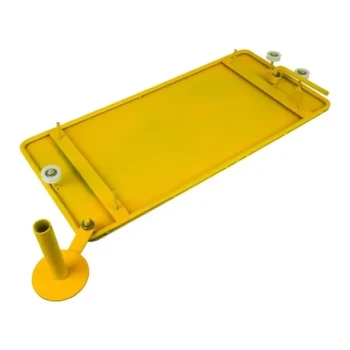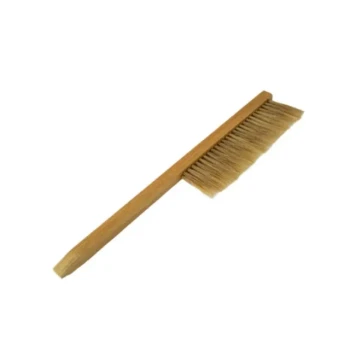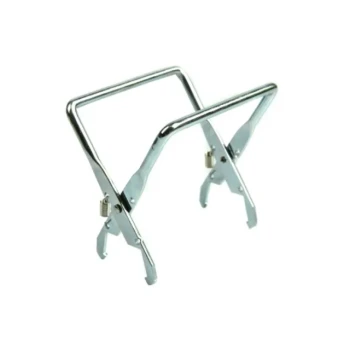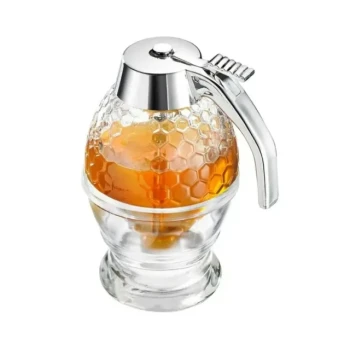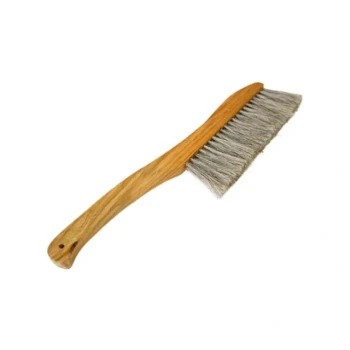When selecting plastic foundation, experienced beekeepers prioritize two key characteristics above all others: a heavy, uniform coating of real beeswax and a specific color tailored to the intended use. These features are not for aesthetics; they are critical for ensuring the bees accept and utilize the man-made material efficiently.
The preference for heavily waxed, black plastic foundation is a strategic choice. It balances the beekeeper's need for durability and inspection efficiency with the bees' natural instinct to build comb, bridging the gap between an artificial material and a biological imperative.
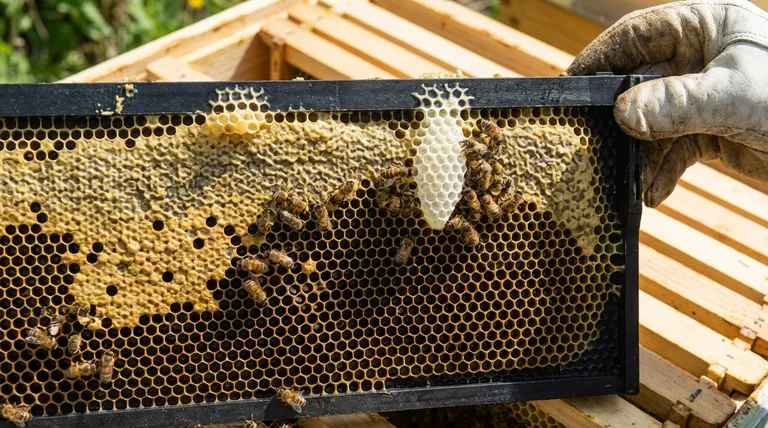
The Core Requirements for Bee Acceptance
Bees will not naturally work with bare plastic. The characteristics beekeepers look for are all designed to make the plastic foundation as attractive and functional as possible to the colony.
The Critical Role of a Heavy Wax Coating
The single most important factor is the wax coating. Bees build with beeswax, and a plastic sheet is a foreign object they will often ignore.
A thick layer of real beeswax serves as the necessary bridge. It provides the scent and texture bees recognize, encouraging them to begin drawing out the cells of the comb. Foundation with a thin or non-existent coating will be rejected, especially if a natural nectar flow is not strong.
The Preference for Black Foundation
Many beekeepers specifically choose black plastic foundation, particularly for the brood chamber (the lower boxes of the hive where the queen lays eggs).
The reason is purely functional: the high contrast of the black background makes it significantly easier for the beekeeper to spot tiny, white bee eggs and young larvae during hive inspections. This is essential for quickly assessing the health of the queen and the colony.
Color-Coding for Hive Management
Some beekeepers employ a color-coded system. They use black foundation for brood boxes to aid inspection and yellow or white foundation for honey supers (the upper boxes for honey storage).
This strategy helps maintain a clear separation. It ensures honey is stored on cleaner comb and makes it visually obvious if the queen has moved into the honey supers, which is generally undesirable.
Understanding the Trade-offs: Plastic vs. Wax
Choosing plastic foundation is a practical decision with clear benefits for the beekeeper, but it's important to understand what you gain and what you give up compared to traditional beeswax foundation.
The Beekeeper's Benefit: Durability and Longevity
Commercial operators and many hobbyists prefer plastic because it is exceptionally durable. It does not break under the force of high-speed honey extractors, a common problem with frames built on pure wax foundation.
Plastic foundation is also reusable for many years and is more resistant to damage from pests like wax moths or mishandling during inspections.
The Bees' Perspective: A Natural Preference
It is crucial to remember that bees will almost always prefer to build on pure beeswax foundation if given the choice. Plastic is an accepted alternative, not a preferred one for the bees themselves.
Acceptance of plastic is conditional. It depends heavily on the quality of the wax coating and the presence of a strong nectar flow (or supplemental feeding) to stimulate wax production.
The Risk of Slow Acceptance
If the wax coating is too thin or you install frames during a nectar dearth, the bees may be very slow to draw out the plastic comb. This can hinder colony expansion and, in some cases, lead to the bees storing nectar in the brood nest instead of building out new frames.
Making the Right Choice for Your Hive
Your decision should be based on your specific beekeeping goals, balancing efficiency with the natural tendencies of the bees.
- If your primary focus is ease of inspection and colony health checks: Choose heavily waxed, black plastic foundation for your brood boxes to easily spot eggs and larvae.
- If your primary focus is maximum honey harvest and equipment durability: Use plastic foundation in your honey supers to prevent comb blowouts during extraction and ensure long-term use.
- If you are a purist or your bees seem to reject plastic: Consider using pure beeswax foundation, but be prepared for more careful handling, especially during honey extraction.
Ultimately, choosing the right foundation means providing a structure that serves both the practical needs of the beekeeper and the biological needs of the colony.
Summary Table:
| Characteristic | Why Beekeepers Prefer It | Key Benefit |
|---|---|---|
| Heavy Wax Coating | Mimics natural beeswax, encouraging comb building | Ensures bees accept the foundation |
| Black Color | Provides high contrast for easy egg/larvae spotting | Simplifies hive inspections and health checks |
| Color-Coding (Black/Yellow) | Black for brood boxes, yellow for honey supers | Maintains clear hive organization and management |
Upgrade your apiary with foundation that works for you and your bees. HONESTBEE supplies durable, heavily waxed plastic foundation specifically designed for commercial apiaries and distributors. Our wholesale-focused operations ensure you get the equipment that balances beekeeper efficiency with bee biology. Contact HONESTBEE today to discuss your foundation needs and enhance your hive management.
Visual Guide

Related Products
- Food Grade Plastic bee Foundation for Bee Frames
- Colorful Silicone Beeswax Foundation Mold Mould for Beekeeping
- JZBZ Type Wide Base Plastic Queen Cell Cups for Base Mounting and Queen Rearing
- HONESTBEE Durable Frame Wiring Board with Integrated Tensioner
- Classic Wooden Bee Brush with Double-Row Boar Bristles
People Also Ask
- How to get bees to draw out plastic foundation? Boost Comb Building with Proven Tactics
- What additional step can improve the performance of plastic foundation in the hive? Apply a Generous Coat of Beeswax
- What factors should beekeepers consider when choosing between beeswax and plastic foundation? A Guide to Durability vs. Natural Philosophy
- How to get bees to use plastic foundation? Master the Wax Coating and Resource Strategy
- What is a plastic foundation sheet? A Durable, Reusable Hive Management Solution



